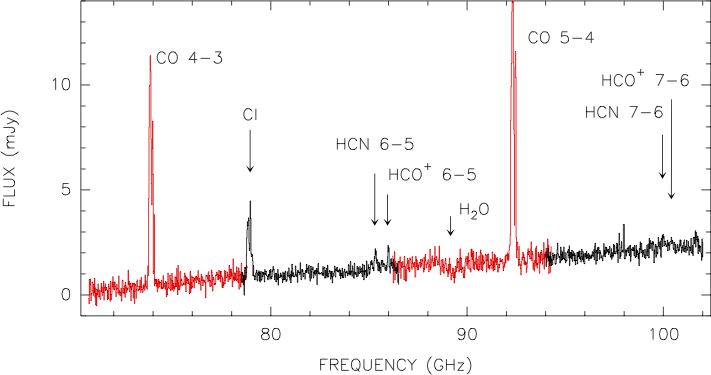News
IRAM closes in on NOEMA's full potential: PolyFiX and the Nine Antenna Array
We are very pleased to announce the successful implementation of the wideband high-performance correlator PolyFiX in concert with the nine antenna array. This has been a crucial milestone in the quest for ever higher sensitivity. Together with the current nine antennas and the new NOEMA receivers, it generates the largest quantum leap in performance the observatory has ever made. The very first observations of a line survey at high-redshift in the 3mm-band are given below as a foretaste of NOEMA's full potential that is now within grasp.
Installation and commissioning have been started by end of September 2017 and all major components including software have been tested and verified by an interdisciplinary team composed of people from the frontend, backend, software and astronomer groups as well as observatory staff at Plateau de Bure.
After a very intense commissioning period we are expecting to resume regular scientific observations on a totally new level, in time for the upcoming winter semester. This will allow our astronomical community to exploit NOEMA's powerful brand-new capabilities to the fullest.
PolyFiX offers now the opportunity to observe both sidebands in dual-polarization, and in the future with up to twelve antennas. Each sideband covers 7.74GHz of bandwidth at a spectral resolution of 2MHz. In parallel a high spectral resolution (62.5kHz) is provided allowing to select up to 128 additional 64MHz wide chunks within the two sidebands, thereby unfolding new horizons for the galactic community as well.
 |
| First wide-band spectroscopy with PolyFiX: This molecular survey demonstrates the power of NOEMA for molecular surveys of high-redshift galaxies. The spectrum, which was observed towards HLS J091828.6+514223, a lensed sub millimeter galaxy at z=5.25, required two receiver tunings (red and black) to cover nearly 32 GHz of bandwidth in two polarizations, and 4 hours of on-source integration per tuning. |

